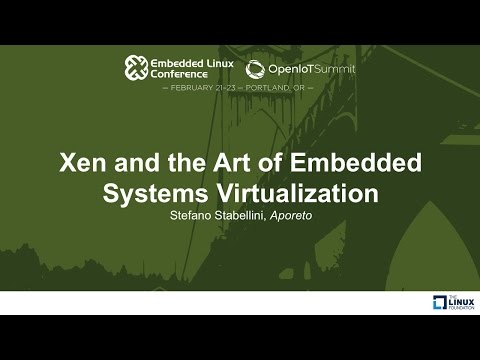Description:
Explore the world of embedded systems virtualization in this 48-minute conference talk by Stefano Stabellini from Aporeto. Delve into the unique challenges and requirements of hypervisors in embedded environments, from automotive to medical and avionics applications. Discover why Xen, originally designed for x86 Linux systems in data centers, has become the leading open source hypervisor for ARM embedded platforms. Learn about the fundamental design decisions that made Xen suitable for ARM embedded virtualization and gain insights into key features such as device assignment and interrupt virtualization. Understand the differences between Xen's ARM port and its x86 counterpart, and explore topics including virtualization extensions, real-time scheduling, memory introspection, and driver domains. Gain valuable knowledge about embedded system requirements, security processes, and GPU-specific drivers in this comprehensive overview of Xen's role in embedded systems virtualization.

Xen and the Art of Embedded Systems Virtualization
Add to list
#Engineering
#Electrical Engineering
#Embedded Systems
#Information Security (InfoSec)
#Cybersecurity
#Automotive Security